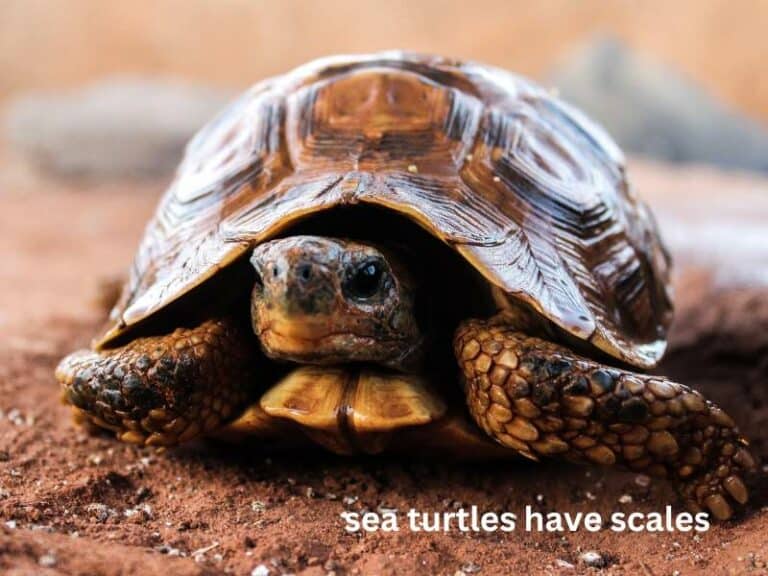How Long Can Turtles Hold Their Breath?
Today we discuss How Long Can Turtles Hold Their Breath. In the vast and diverse realm of the animal kingdom, turtles have always captivated humans with their unique characteristics.
One such fascinating attribute is their ability to hold their breath for extended periods. Have you ever wondered just how long turtles can stay submerged underwater without taking a breath?
Join us as we dive deep into the world of turtle respiration and uncover the secrets behind their impressive breath-holding abilities.
How Long Can Turtles Hold Their Breath:
Understanding Turtle Respiration:
Before we delve into the specifics of turtle breath-holding, it’s crucial to comprehend how these remarkable creatures breathe. Turtles have a unique respiratory system that combines elements of both aquatic and terrestrial respiration.
Turtles primarily breathe using their lungs, similar to other vertebrates. However, unlike mammals, turtles lack a specialized diaphragm muscle to facilitate breathing. Instead, they rely on the expansion and contraction of their body cavity to move air in and out of their lungs. This mechanism allows turtles to breathe while on land.
The Importance of Breath-Holding for Turtles Turtles have evolved to be exceptional divers, spending a significant portion of their lives in water. Breath-holding plays a crucial role in their survival, helping them navigate underwater environments, evade predators, and forage for food.
When turtles submerge themselves underwater, they rely on the oxygen stored in their lungs and other oxygen-rich tissues. By holding their breath, turtles can extend the duration of their dives and efficiently utilize the available oxygen.
Factors Affecting Turtle Dive Duration The duration for which turtles can hold their breath varies greatly among different species and individuals. Several factors influence the dive duration of turtles, including:
Size and Age:
Generally, larger turtles tend to have longer dive durations compared to smaller ones. This is because larger turtles have larger lung capacity and can store more oxygen.
Additionally, older turtles have larger lungs and more efficient respiratory systems than their younger counterparts, enabling them to hold their breath for longer periods.
Activity Level:
The level of physical activity undertaken by turtles before a dive affects their ability to hold their breath. Turtles that have been swimming or foraging vigorously require more oxygen and may have shorter dive durations compared to resting turtles.
Environmental Conditions:
Environmental factors such as water temperature and availability of oxygen also impact turtle dive durations.
Cold water temperatures decrease metabolic rates, allowing turtles to conserve oxygen and prolong their dives. Conversely, warm water temperatures increase metabolic rates, reducing dive durations.
Physiological Adaptations for Breath-Holding Turtles possess several remarkable physiological adaptations that enable them to hold their breath for extended periods underwater:
Slowing Metabolic Rate:
Turtles can slow down their metabolic rate while submerged underwater. By reducing their oxygen consumption, they can conserve the limited oxygen supply in their lungs and other tissues.
Oxygen Storage:
Turtles can store significant amounts of oxygen in various tissues throughout their bodies. In addition to their lungs, they store oxygen in specialized blood proteins called hemoglobin and myoglobin. These proteins release oxygen when needed during prolonged dives.
Anaerobic Respiration:
When oxygen levels become critically low during prolonged dives, turtles can switch to anaerobic respiration. This process allows them to derive energy from stored glycogen without requiring oxygen. However, anaerobic respiration produces lactic acid, which can lead to muscle fatigue and limitations on dive duration.
Examples of Turtle Breath-Holding Abilities Different turtle species showcase varying breath-holding capabilities. Let’s explore some notable examples:
Leatherback Sea Turtles:
Leatherback sea turtles are among the deepest-diving marine reptiles. They can stay submerged for up to 85 minutes while hunting for jellyfish, thanks to their large size, efficient oxygen storage, and physiological adaptations.
Musk Turtles:
Musk turtles are known for their impressive breath-holding abilities. These small-sized turtles can stay submerged for around 50-60 minutes due to their efficient anaerobic metabolism.
Snapping Turtles:
Snapping turtles are renowned for their aggression and ability to remain submerged for extended periods. They can hold their breath for up to 45 minutes or more while waiting for prey or avoiding predators.
The Risks of Prolonged Breath-Holding While turtles possess incredible breath-holding abilities, prolonged submersion can still pose risks to their health. Extended dives increase the accumulation of lactic acid in muscles, leading to fatigue and reduced swimming performance. Furthermore, prolonged dives may limit a turtle’s ability to detect predators or seek refuge.
Conclusion
Turtles’ ability to hold their breath underwater is a testament to the remarkable adaptations they have developed over millions of years. From physiological modifications to behavioral adjustments, turtles have honed this skill to optimize survival in various aquatic environments. Understanding the factors influencing turtle dive durations not only enhances our knowledge but also deepens our appreciation for these captivating reptiles.
